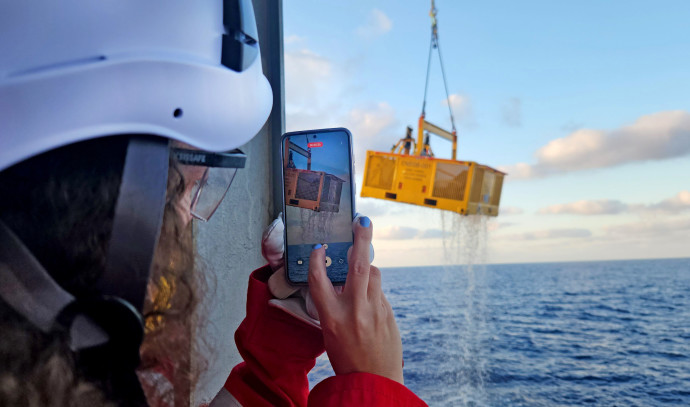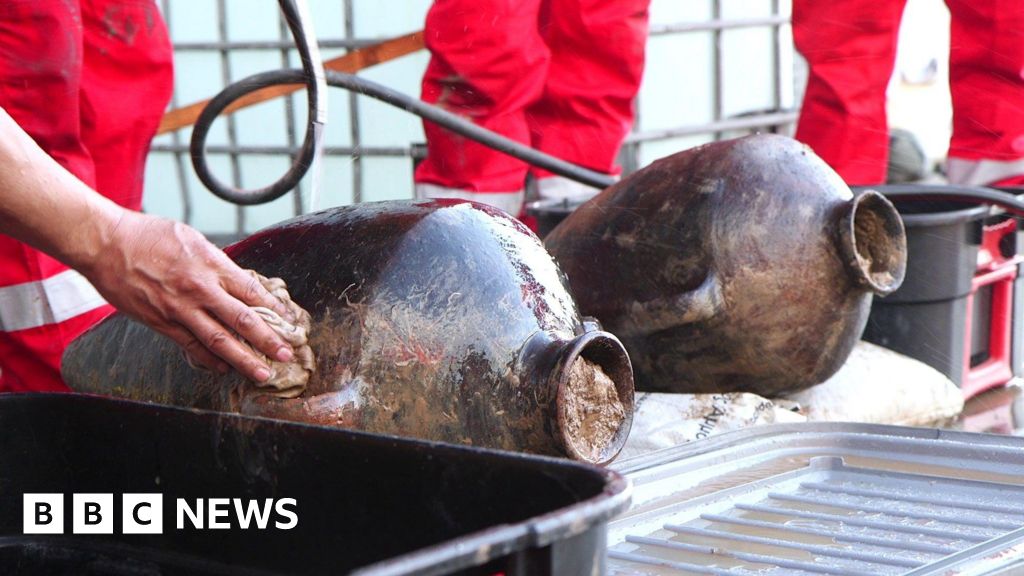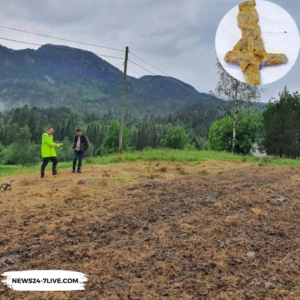Israeli experts have unearthed the oldest shipwreck ever found in the deep sea, dating back 3,300 years to the Late Bronze Age. The shipwreck was discovered 90 kilometers off the northern coast of Israel at a depth of 1,800 meters.

Also Read: Norway Farmer Discovers 1,100-Year-Old Viking Sword in His Field
The shipwreck was found during a routine oil and gas survey by Energean, a natural gas company located 90 kilometers (56 miles) off the northern coast of Israel and submerged at a depth of 1,800 meters (5,905 feet).
The find was announced by the Israel Antiquities Authority (IAA), following its detection by Energean, during a survey of an uncharted gas field.
Initial examination of two clay jars or Canaanite amphorae, suggests that the merchant vessel estimated to be 39 to 46 feet in length, sank around 1400 B.C. to 1300 B.C., during the height of the Egyptian Empire.
Footage captured by a remotely operated submersible robot indicates that the ship settled on the seafloor without capsizing. The cargo including hundreds of storage jars remained largely intact.
The site contained hundreds of amphorae, which are ancient storage jars used by the Canaanites, an ancient people living in the region from modern-day Turkey to Egypt.
These jars are believed to date back to the 14th century BCE, making them over 3,300 years old. This period corresponds to the Late Bronze Age, a time of flourishing international trade in the Mediterranean.
The cargo provides evidence of the trade networks that existed during this time, connecting the Levantine region with other parts of the ancient world.
The location of the wreck suggests that ancient mariners navigated the open seas using celestial bodies like the sun and stars, a practice known as celestial navigation.
This discovery challenges the previous academic assumption that ancient seafarers primarily hugged the coastlines for safety and navigation.
It reveals their ability to undertake open-sea voyages with precision. According to Jacob Sharvit, head of the Israel Antiquities Authority’s marine unit, the find demonstrates the advanced navigational skills of ancient mariners who could traverse vast oceanic distances without relying on coastal landmarks.
The wreck’s location at such great depth has preserved it from human interference and natural disturbances such as waves and currents, which typically affect shallower shipwrecks.
The untouched condition of the wreck offers a snapshot of the past, allowing archaeologists to study the ship and its contents in their original state.
Advanced technology and specially designed tools are required to reach and retrieve artifacts without damaging them.
Only two amphorae were carefully removed from the site to minimize disturbance to the remaining artifacts.
Also Read: 2,300-Year-Old Gold Ring Unearthed in Jerusalem’s City of David
According to Cemal Pulak, a nautical archaeologist at Texas A&M University, Bronze Age shipwrecks are extremely rare. Only two other shipwrecks from this period with cargo have been found in the Mediterranean, both off the Turkish coast and closer to shore.
The ship’s sinking occurred during a period of international trade and wealth in the eastern Mediterranean.
This era saw the Egyptian Empire’s influence extending from northern Syria to Sudan and coincided with the reign of the boy pharaoh Tutankhamun.
The shipwreck was detected last summer by Energean’s remotely operated vehicle (ROV) during a survey for natural gas.
The ROV, tethered to a surface vessel by a steel cable, captured images of what appeared to be a pile of jugs on the seafloor.
The ROV was equipped with mechanical appendages capable of carefully extracting artifacts with minimal risk of damage. It also mapped the site revealing that the amphorae rested in a vessel partially embedded in sediment.
Two jars were extracted. Both were filled with silt and further analysis will determine their original contents. The jars are believed to have contained honey, olive oil and resin from the Pistacia atlantica tree, used in various applications including wine preservation and as incense in Egypt.
The ship’s great depth has shielded it from human interference and natural currents, preserving it in a state of suspended time.
According to Jacob Sharvit, director of maritime archaeology for the Israel Antiquities Authority, the ship’s preservation is unparalleled due to its depth and undisturbed condition.
Unlike the Uluburun wreck, which was excavated over 22,413 dives, the deep-sea site may require advanced technology and methodology for a more thorough exploration in the future.
Also Read: Scientists Discover ‘Echidnapus’ in Lightning Ridge Opal Fields























